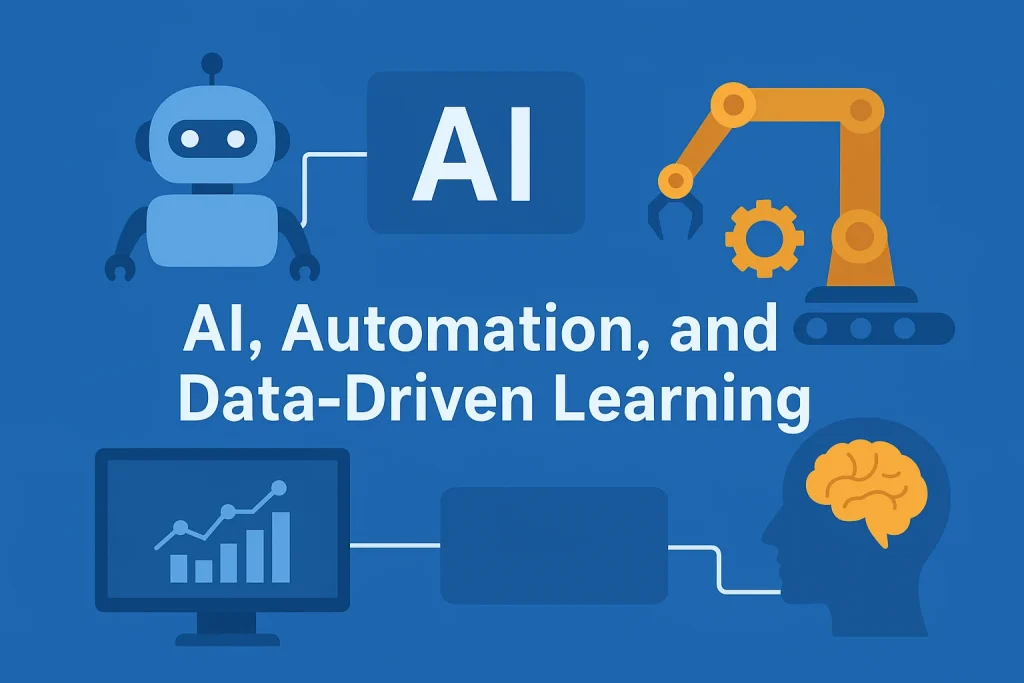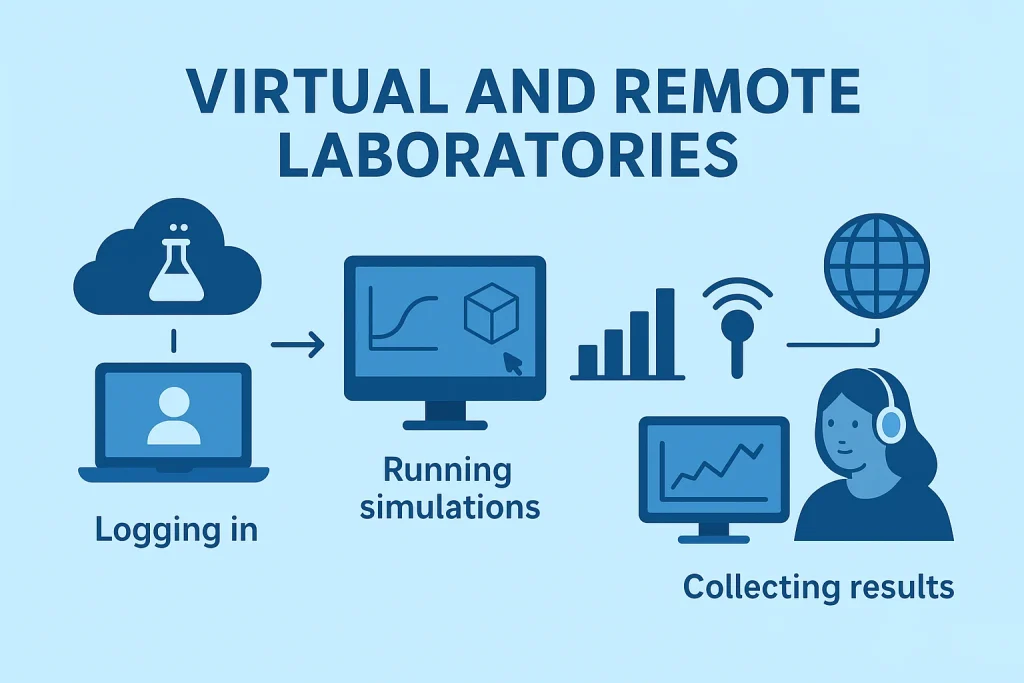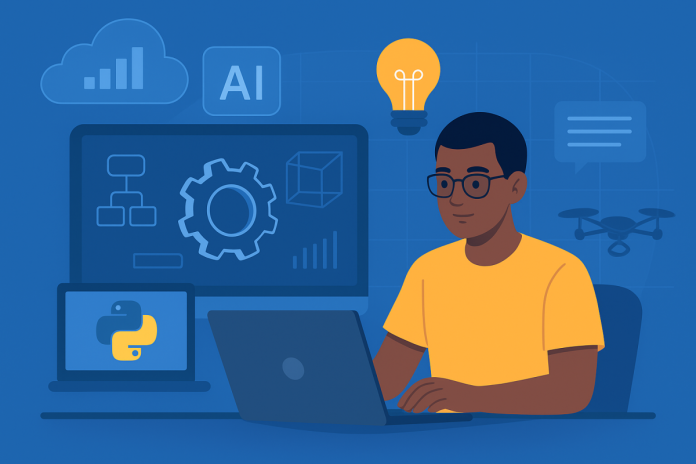Introduction
Engineering has evolved from mechanical design and circuit theory into a software-defined discipline powered by cloud computing, data analytics, and artificial intelligence. Modern engineering innovation is built on code, simulation, and digital collaboration.
The expansion of online engineering education is accelerating this transformation. By integrating professional-grade software, virtual labs, and AI-enhanced learning environments, online platforms are training a new generation of engineers capable of building intelligent, connected, and sustainable technologies.
Table of contents
- Introduction
- The Fusion of Software and Engineering Education
- AI, Automation, and Data-Driven Learning
- Cloud Platforms Enabling Global Collaboration
- Virtual and Remote Laboratories
- Industry-Aligned, Software-Centric Curriculum
- Preparing for the Software-Defined Engineering Workplace
- Democratizing Access Through Technology
- Conclusion
The Fusion of Software and Engineering Education
Today’s online engineering programs are far more than video lectures; they’re interactive digital ecosystems built on robust software infrastructures that play a crucial role in driving technological advancements. Students learn through real-world tools used in professional settings:
- MATLAB, Simulink, and Octave for modeling, control systems, and numerical computation
- ANSYS, COMSOL Multiphysics, and SolidWorks Simulation for finite element and thermal-fluid simulations.
- Autodesk Fusion 360, CATIA, and Onshape for CAD and collaborative product design.
- Python, C++, and MATLAB scripting for automation, AI integration, and computational design.
These platforms don’t just replicate traditional labs they transform theoretical concepts into data-driven workflows, enabling students to visualize, simulate, and optimize designs in ways that mirror professional innovation in aerospace, robotics, renewable energy, and smart manufacturing sectors.
AI, Automation, and Data-Driven Learning

AI is revolutionizing both how engineering is practiced and how it’s taught. Online platforms are now powered by machine learning algorithms that adapt to each learner’s pace and performance.
Systems like Coursera’s AI tutor, edX’s adaptive learning modules, and Labster’s simulation analytics track student behavior and adjust complexity dynamically.
On the technical side, learners gain hands-on experience with:
- TensorFlow, PyTorch, and MATLAB Deep Learning Toolbox for engineering-focused AI applications.
- Tableau, Power BI, and Python’s Pandas for data-driven decision-making in system optimization.
- JupyterLab and VS Code Cloud for integrated, browser-based coding environments.
This data-centric approach prepares engineers to analyze system performance, predict outcomes, and develop intelligent, autonomous technologies.
Cloud Platforms Enabling Global Collaboration
Online engineering education now leverages the power of cloud computing to deliver scalable, high-performance learning environments that eliminate traditional hardware limitations. Platforms such as AWS Educate, Azure Lab Services, and Google Cloud Skills Boost allow students to run complex simulations and computational analyses entirely in the cloud, ensuring seamless performance regardless of local device capabilities. For advanced modeling tasks, SimScale provides a browser-based simulation platform for conducting computational fluid dynamics (CFD) and finite element analysis (FEA) directly online.
Collaboration and version control are also fully integrated into the digital workflow. Tools like GitHub, GitLab, and Bitbucket enable continuous integration and deployment (CI/CD), supporting collaborative software and design projects in real time. Meanwhile, Miro, Slack, and Microsoft Teams facilitate dynamic communication, brainstorming, and virtual design sprints across global teams.
Together, these platforms reflect the operational reality of modern engineering firms, where distributed teams use cloud-based pipelines to design, test, and co-develop systems seamlessly across time zones, ushering in a new era of digitally connected, globally synchronized engineering innovation.
Virtual and Remote Laboratories

Engineering’s hands-on nature has traditionally been a significant barrier to online learning, but technology has effectively closed that gap. Today, advanced online engineering programs use virtual lab software that replicates the physical experimentation experience in highly realistic ways. Platforms such as Labster enable 3D immersive experimentation across various engineering disciplines, while NI Multisim Live provides a cloud-based environment for digital circuit design and analysis. For students working on embedded systems, Tinkercad Circuits offers interactive microcontroller programming and simulation. Similarly, Simulink Real-Time allows learners to perform hardware-in-the-loop (HIL) testing, bridging the gap between simulation and physical implementation.
This setup enables students to collect real-world sensor data, run experiments remotely, and analyze results in real time. The result is a hybrid learning model that fuses physical and virtual prototyping, accurately mirroring how modern research and development laboratories operate.
Industry-Aligned, Software-Centric Curriculum
Online engineering programs now evolve rapidly, keeping pace with the ever-changing technology industries. Moreover, many of these programs collaborate directly with leading companies such as NVIDIA, Autodesk, Siemens, and Dassault Systèmes to ensure that their curricula remain closely aligned with real-world workflows.
Typical coursework includes:
- Digital Twin modeling using MATLAB and Simulink.
- Cloud-based CAD/CAM integration using Autodesk Fusion 360 or Onshape API.
- AI-driven control systems using TensorFlow and ROS (Robot Operating System).
- Embedded systems prototyping with ARM mbed, Proteus, and Keil µVision.
Students graduate not just with knowledge, but with fluency in the digital toolchains powering global engineering innovation.
Preparing for the Software-Defined Engineering Workplace
Engineering teams today operate in fully digital ecosystems. Mechanical engineers code Python scripts to automate CAD workflows; electrical engineers run simulations in the cloud; civil engineers use BIM (Building Information Modeling) with Revit and Navisworks; and systems engineers deploy AI models for predictive maintenance.
Online education replicates this workflow perfectly. Students collaborate using Git, manage tasks on Jira, and deploy projects via Docker or Kubernetes, mirroring modern DevOps culture within engineering.
The result is a graduate who’s not just technically competent, but digitally fluent, ready for cloud-native, data-centric engineering environments.
Democratizing Access Through Technology
The most powerful impact of online engineering education lies in its accessibility. In particular, through open-source tools like FreeCAD, OpenFOAM, and GNU Octave, learners anywhere around the world can practice advanced engineering without facing the barrier of expensive licenses. As a result, education in this field has become more inclusive and affordable than ever before. This democratization is fueling innovation in developing regions, allowing students to build expertise in renewable systems modeling, smart infrastructure, and AI-driven product design using freely available, industry-standard software.
Conclusion
Online engineering education has evolved into a tech-driven innovation platform, merging software engineering, AI, and cloud collaboration into one continuous learning ecosystem.
This software-defined approach doesn’t just teach engineering, it redefines it. As online platforms continue to advance, they’re not merely training the next generation of engineers; they’re building the architects of the next industrial revolution, where innovation begins with a line of code, a simulation run, or a cloud deployment.











